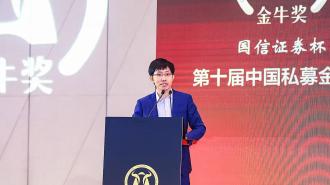It’s impossible to discuss AI lately without bumping into DeepSeek.
The fervor around the Chinese AI startup feels reminiscent of ChatGPT’s spectacular eruption onto the scene in November 2022, when people who’d never thought twice about AI before were suddenly talking about token limits and prompt engineering.
The difference, though, is that ChatGPT is a powerful tool, while DeepSeek signals a shift in the global AI landscape itself.
The startup
DeepSeek was founded in July 2023 by Liang Wenfeng and backed by his quantitative hedge fund High-Flyer. It’s somewhat shrouded in mystery because of that. It’s not a venture-backed hypergrowth company. It’s also not a state-backed giant. Neither is it an offshoot of the actual Chinese tech giants, Alibaba or Tencent.
In the months prior to the January 20, 2025, unveiling of DeepSeek’s R1 model, Western narratives comfortably painted China as trailing behind the US in AI, stymied by Biden-era semiconductor sanctions. Leopold Aschenbrenner’s widely-cited treatise supported this view, depicting Chinese labs advancing primarily by espionage rather than innovation.
The release of DeepSeek R1 punctured this narrative, rather definitively.
R1 Zero revealed just how radically effective reinforcement learning methods could be.
DeepSeek’s innovations were incredible. Watching the model’s reasoning traces unfold in real time was genuinely compelling, a testament to thoughtful architectural choices. It was delightful, mesmerizing even, to observe the model openly “thinking” through challenges, an experience that felt distinctively novel. It felt like another ChatGPT moment.
Perhaps even more startling was DeepSeek-R1-Zero, a model released the same day as R1, but trained entirely through reinforcement learning (RL). It didn’t just push boundaries — it seemingly tore them apart. The model revealed just how radically effective RL methods could be, shifting perceptions significantly and thrusting Generalized Reward-based Policy Optimization (GRPO), a previously obscure and academic algorithm, into the spotlight.
Both models were entirely open source, which meant that any company who cared about privacy or didn’t want to send data out could actually host them on their servers. Many are already doing so and getting top-tier performance.
DeepSeek’s huge (if theoretical) profit margin further differentiated it from its resource-heavy, cash-burning US counterparts in the global AI race.
If anyone still doubted that DeepSeek was something special after seeing those models, the startup’s “Open Source Week” likely won them over. Between February 24 and February 28, it released five code repositories that others could incorporate into their projects to optimize GPU performance, manage datasets, and more.
And if that wasn’t enough, DeepSeek announced in March that its models could be bringing in a lot of money — in theory, anyways.
According to the startup, if it charged R1 pricing for all of its services (rather than making some discounted or free), it would be making $562,027 in revenue while spending $87,072 on GPU leases every day. That’s a huge profit margin, especially considering DeepSeek would still be charging the lowest prices on the market, and it further differentiated the startup from its resource-heavy, cash-burning US counterparts in the global AI race.
The impact
The day DeepSeek-R1 launched, the stock market tumbled as traders panicked over a supposed erosion of Western technological advantage. On January 27, Nvidia’s share price fell 17%, evaporating nearly $600 billion in market value. Marc Andreessen called R1 “AI’s Sputnik moment.” President Donald Trump said DeepSeek should be “a wake-up call” for US industries.
DeepSeek’s impact on the stock market proved to be only temporary — in the AI arms race, everyone needs silicon, and Nvidia’s stock recovered most of its losses in the weeks that followed the release of R1 — but the startup’s arrival has left a permanent mark on the AI landscape.
DeepSeek’s huge (if theoretical) profit margin further differentiated it from its resource-heavy, cash-burning US counterparts in the global AI race.
During a 2023 conversation in India, Sam Altman talked about the futility of a small team with little funding trying to compete with OpenAI in building a foundational model — he asserted that his company was just too far ahead in both research and resources.
DeepSeek has proven this narrative false and shown that vast quantities of capital and cutting-edge chips aren’t prerequisites for world-class AI. It has reframed the “AI race” as not just chips versus sanctions, but also efficiency versus brute force and cleverness versus raw scale.
Every country has smart people, and DeepSeek proves that, if your people are smart enough, you can do extraordinary things, even if your resources are limited.
The future of AI isn’t likely to be built by one country or group.
The mountain of resources that will continue to pour into American companies means that China might still fall behind in the AI race, no matter how clever its researchers. The chip embargo is still coming into effect, and the Stargate Project, a collaboration between OpenAI, Oracle, and SoftBank, will invest $500 billion into building AI infrastructure in the US, helping the nation maintain a position of leadership in the field.
At the same time, though, Liang recently met with Chinese President Xi Jinping, a sign that DeepSeek has the support of its powerful home nation going forward.
Ultimately, the main takeaway from DeepSeek should be that the future of AI isn’t likely to be built by one country or group. The process is far more democratised than what one might have expected, and the country that many believed could only pull ahead in the AI race by cheating turned out to have an underdog research lab capable of overtaking the giants — at least temporarily.
We’d love to hear from you! If you have a comment about this article or if you have a tip for a future Freethink story, please email us at [email protected].






